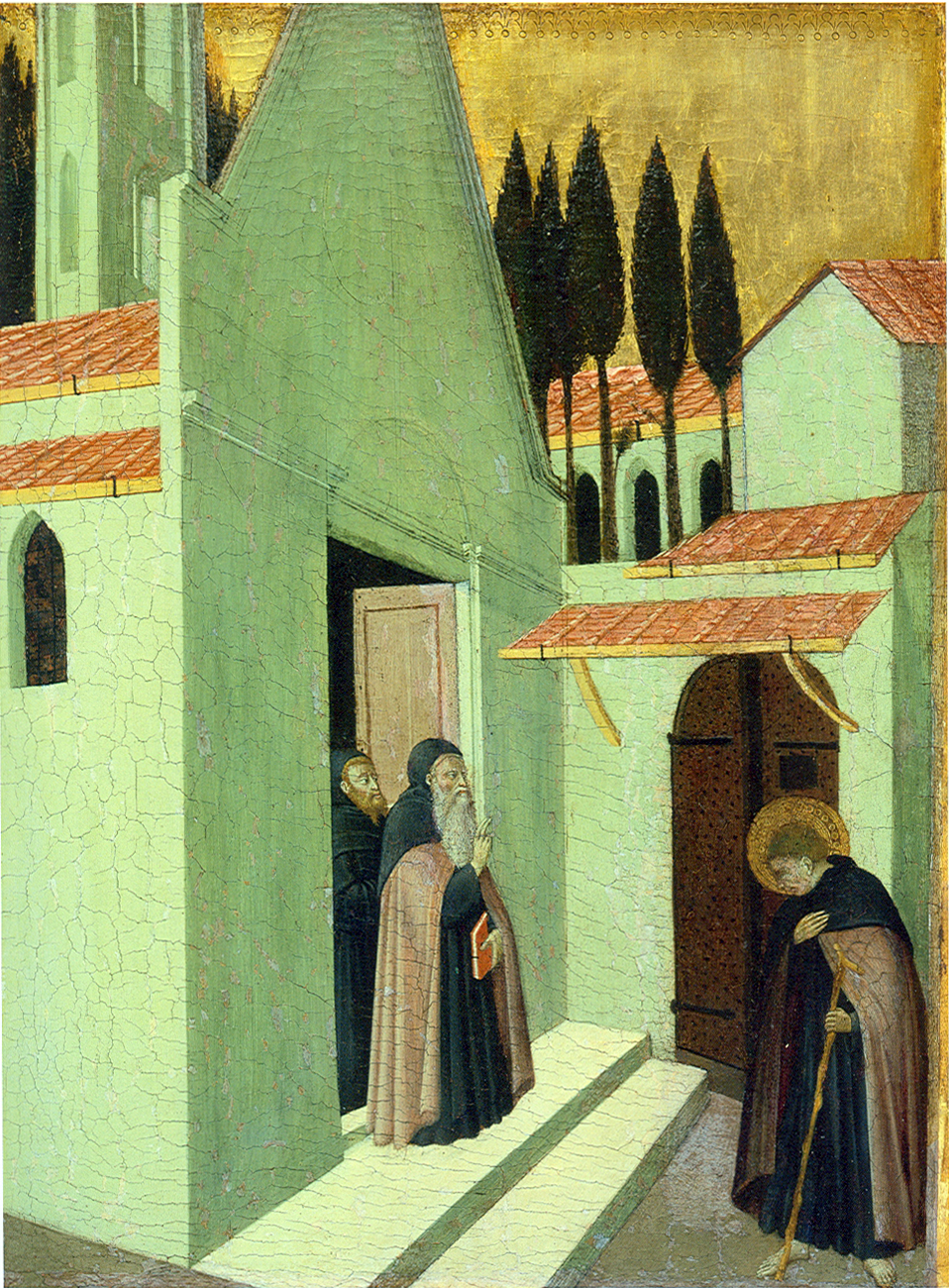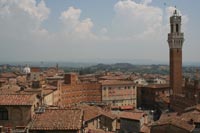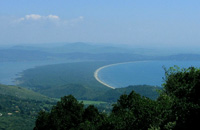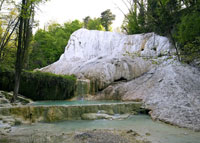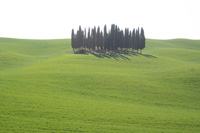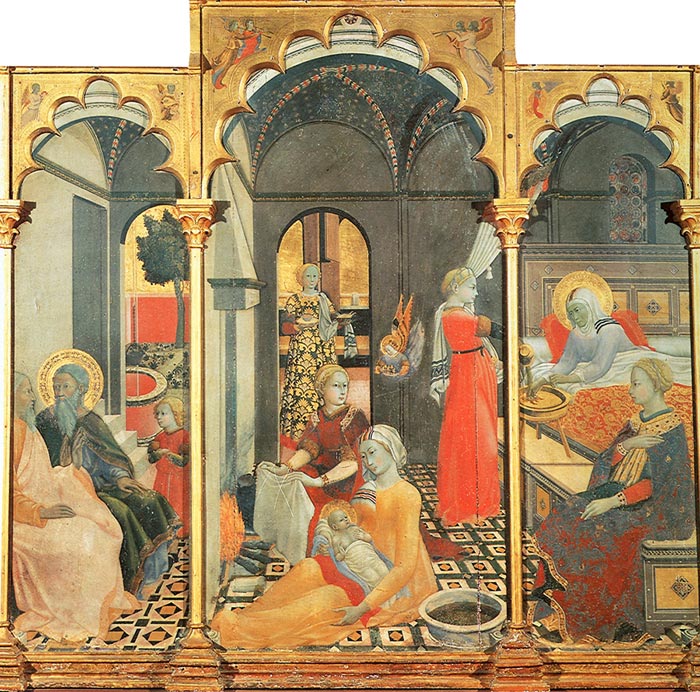 |
Master of the Osservanza, Birth of the Virgin with other Scenes from her Life, ca. 1428-39, Museo d'Arte Sacra, Asciano
|
Il Maestro dell'Osservanza | Master of the Osservanza |
Il Maestro dell'Osservanza, the Master of the Osservanza Triptych, also known as the Osservanza Master and as the Master of Osservanza, was an Italian painter of the Sienese School who was active about 1430 to 1450. The Italian scholar, Roberto Longhi, recognized that two triptychs, formerly attributed to Sassetta, were the work of another hand. The Virgin and Child with SS Jerome and Ambrose (Siena, Osservanza) and the Birth of the Virgin (Asciano, Museo d'Arte Sacra), formerly in the Collegiata, Asciano, both have a stylistic affinity with Sassetta's works but, in terms of narrative expression, still belong to the Late Gothic tradition. Longhi observed that a further group of paintings was closely related to these works. This included the predella of the Osservanza Altarpiece (Siena, Pinacoteca Nazionale), a predella of St Bartholomew (Siena, Pinacoteca Nazionale), scenes of the Passion (Rome, Pinacoteca Vaticana; Philadelphia, Museum of Art; Cambridge, Fogg Museum) and the scenes from the Life of St Anthony Abbot (dispersed; e.g. panels in Washington, National Gallery of Art; New York, Metropolitan Museum of Art; Wiesbaden, Museum Wiesbaden) previously also attributed to Sassetta. These last panels are difficult to integrate into the group. The full-length painting of St Anthony Abbot (Paris, Louvre), which scholars have attempted to integrate with the small scenes from the saint's life into a multipartite altarpiece, seems to come from another altarpiece.
|
Saint Anthony Distributing His Wealth to the Poor, c. 1430/1435 |
||
| In 1940, several panels, until then universally attributed to Sassetta, were reassigned by Longhi to another hand, today generally known as the Master of the Osservanza (active c. 1430-50). The most striking are scenes from the Life of St Anthony which were commissioned by the Augustinians. They held Anthony (251—356) in special esteem as the founder of Christian monasticism, whose example converted St Augustine (Confessions, Book VIII). Along with The Death of Saint Anthony, Saint Anthony Leaving His Monastery, and The Meeting of Saint Anthony and Saint Paul, Saint Anthony Distributing His Wealth to the Poor is one of a series of panels illustrating the life of Saint Anthony, founder of Christian monasticism. Their original setting is uncertain but they were probably from a single altarpiece where they were arranged vertically to flank a central image of a saint, painted or perhaps sculpted. In the first scene (illustrated here), young Anthony renounces his wealth and distributes it among the poor. Although he lived in the third century, the saint is depicted in contemporary guise. The arms of a prominent Sienese family appear over a doorway, and some of the architecture may reflect specific buildings in the city and surrounding area. Here are beggars with patches on their clothing, a blind man being led by his small dog, and on the balcony, the iron spikes that supported awnings against the summer sun. Like the dramatic sermons of street preachers and the performance of religious plays, in which townspeople acted the parts of saints, these details helped viewers visualize sacred events with immediacy and vividness. The artist combined tradition—note the typically Sienese brilliance of his pinks and greens—with a new interest in landscape and experiments in perspective. Through windows and doorways overlapping layers make depth legible. |
||
| This panel depicts Anthony's second temptation on a rock-strewn path. The deep wilderness is uncanny, punctuated by fire-blasted trees and a sequence of still beasts — a rabbit, two deer, another rabbit — leading back to the sinister lake and the dark tower, surveyed by ominous crows. Anthony, now white-haired, throws up his hands in frozen horror. The focus of his gaze was originally a heap of diabolic riches, overpainted in a restoration.
The theme of Anthony's tribulations has called forth some of the greatest images in European art - from Bosch's Lisbon Triptych and Grünewald's Isenheim Altarpiece, to the 20th-century artists Ensor and Beckmann. Yet the Sienese images remain perhaps the most 'schizoid' and inward of them all. Like many works by the Master of the Osservanza, this painting was at one time ascribed to the fifteenth-century Sienese painter Sassetta. It belongs to an elaborate cycle of eight panels representing scenes from the life of Saint Anthony Abbot. The painter's penchant for highly descriptive narrative detail is abundantly displayed in the simple church, barren trees, rocky path, gentle fauna (symbols of Anthony's temptations), and, most strikingly, the light-streaked sky at dusk. The ground at the lower left, now empty, originally showed a pot of gold, a symbol of seductive worldly goods that the stalwart saint resists. The detail was scraped away during the painting's early history, making Saint Anthony's recoiling gesture seem incongruous. |
|
|
|
| ||
Master of Osservanza, Burial of Saint Monica and Saint Augustine Departing from Africa, about 1430
|
||
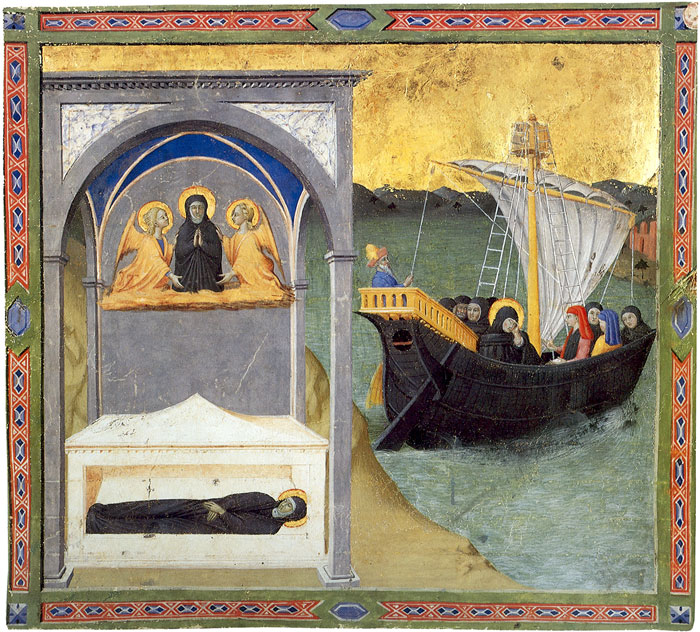 |
||
Master of Osservanza, Burial of Saint Monica and Saint Augustine Departing from Africa, about 1430, tempera and gold on vellum, 24.7 x 27 cm, Cambridge, Fitzwilliam Museum
|
||
Master of Osservanza, Saint Anthony at the Mass (detail), (panel of Saint Anthony Abbot Altarpiece), about 1430
|
||
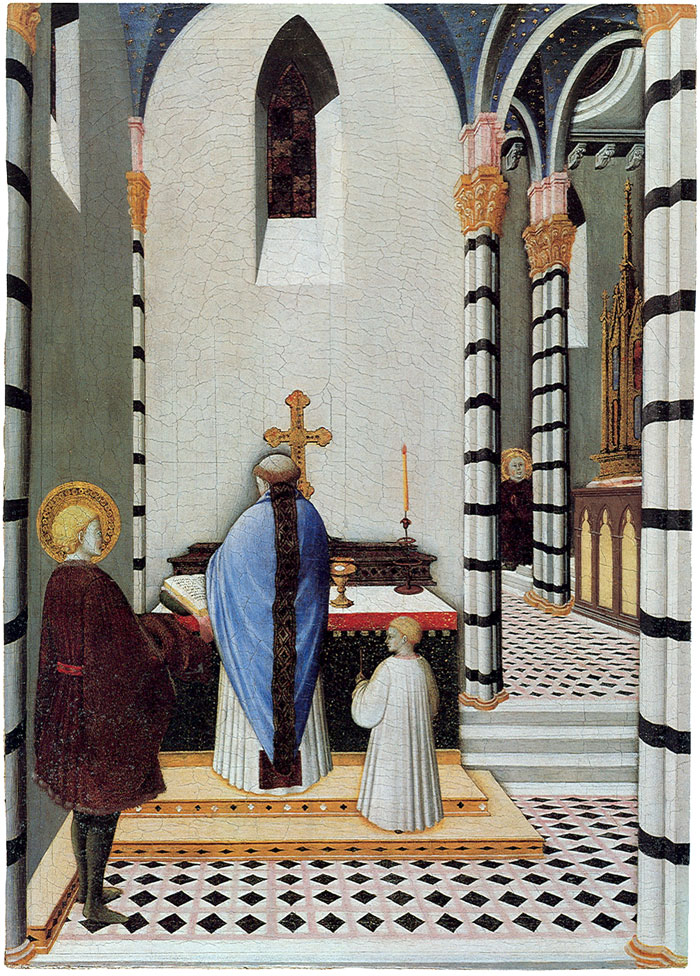 |
||
Master of Osservanza, Saint Anthony at the Mass (detail), (panel of Saint Anthony Abbot Altarpiece), about 1430-1435, Berlin-Dahlem, Staatliche Museen Preussischer Kulturbesitz, Gemaldegalerie
|
||
Master of Osservanza, Saint Anthony Leaving His Monastery, (panel of Saint Anthony Abbot Altarpiece), about 1430
|
||
Master of Osservanza, Saint Anthony Leaving His Monastery, about 1430-1435, tempera on panel; 47.2 x 35 cm (whole panel), 46 x 34 cm (painted surface), Washington, National Gallery of Art . |
||
Master of Osservanza, Saint Anthony Tempted by the Devil in the Guise of a Woman, (panel of Saint Anthony Abbot Altarpiece), about 1430
|
||
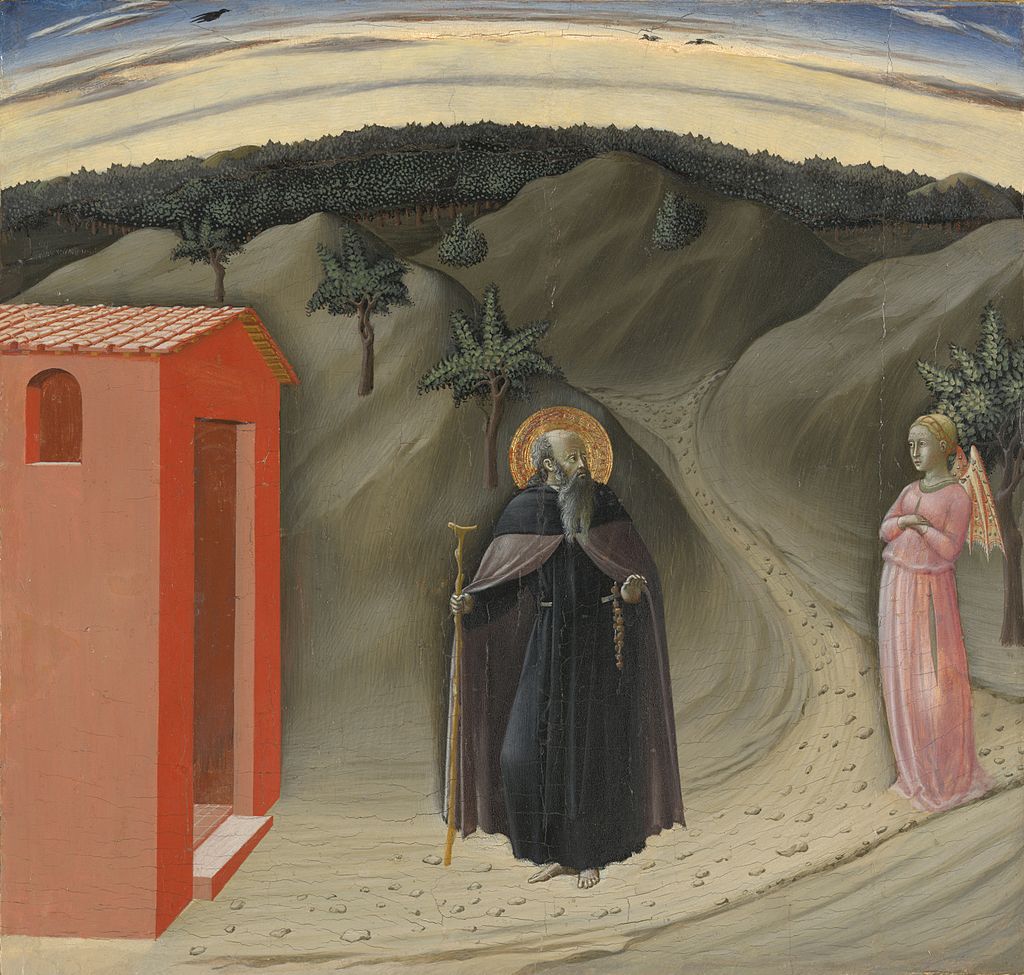 |
||
Master of Osservanza, Saint Anthony Tempted by the Devil in the Guise of a Woman, about 1430-1435, tempera and gold on panel, 37.9 x 40.2 cm (painted surface) New Haven, Yale University Art Gallery
|
||
In this panel Saint Anthony, after retiring to a life of abstinence in an isolated desert hut, is beset with temptations of the flesh. The wings in the back of the seductress at the right identify her as a dissembling devil. The Saint keeps to his route, the narrow stony path of virtue, and raises his hand to ward off the evil that pursues him.
|
||
Master of Osservanza, Descent into Limbo, (panel of Saint Anthony Abbot Altarpiece), about 1430
|
||
 |
||
Master of Osservanza, Descent into Limbo, about 1440-1444, tempera and gold on panel, 38 x 47 cm, Massachusetts, Cambridge, Harvard Univesity Art Museum (Fogg Art Musem)
|
||
Until at least the mid-fifteenth century, several Sienese painters continued to create highly original works within their broadly shared pictorial language. The Master of the Osservanza's Descent into Limbo stands out, above all by its weird colour. No reproduction can quite convey the peculiar radiance of Christ's aureole - palest yellow with hints of pale violet - pressing into the utter blackness of the cave. The surface is oddly enamel-like, smooth and dense.
|
||
Master of Osservanza, Flagellation of Christ, about 1440-1444
|
||
 |
||
Master of Osservanza, Flagellation of Christ, about 1440-1444, tempera and gold on panel, 36.5 x 45.7 cm, Rome, Vatican, Vatican Museums
|
||
Master of Osservanza, Resurrection, about 1440-1444
|
||
Master of Osservanza, Resurrection, about 1440-1444, tempera and gold on panel; 36.9 x 45.9 cm (whole panel), 36 x 44.3 cm (painted surface), Michigan, Detroit Institute of Arts
|
||
In the Resurrection scene, similarly to the Descent to Limbo scene, a use of deepest flat black recurs, the silhouetted hill rising to a dark tower. Behind, the dawn sky - a vermilion-streaked arc with rags of cloud hovering in stillness - is a feat of imaginative observation without precedent or heir.
|
||
Master of Osservanza, Way to Calvary, about 1440-1444
|
||
 |
||
| Master of Osservanza, Way to Calvary, about 1440-1444, tempera and gold on panel; 36.8 x 46.8 cm (whole panel), Philadelphia, Museum of Art . |
||
|
||
Franciscan Saint in Prayer before a Vision of Christ and Saints
|
||
Master of Osservanza, Franciscan Saint in Prayer before a Vision of Christ and Saints, with a Male Saint, Museum of Fine Arts, Boston
|
||
Reliquaries are precious containers for relics of holy persons. The painting on one side depicts the Crucifixion and above it, John the Baptist. The painting on the other side shows a Franciscan saint before a vision of Christ, the Virgin, and perhaps Saint Peter. A male saint is painted in the pinnacle above. This reliquary was first restored as early as the eighteenth century, when some of the glass roundels containing the relics and a number of the labels identifying the saint from whom the relic came were replaced. The unidentified artist, who is known for the smooth draperies of his figures, is named for a painting in the church of the Osservanza, outside Siena.
|
||
|
||
| Sano di Pietro
Sano di Pietro (1405 - 1481 ) was one of the most prolific and successful Sienese painters, the head of a workshop that satisfied the demands of civic and religious institutions in the city as well as those of private devotion. His production, technically always of a very fine quality, rich in decorative effects, and characterized by a brilliant palette, often contains motifs that appear monotonous and repetitive. Although in 1428 he was already listed in the guild of Sienese painters, his work is well documented in its various stages only from 1444 (Gesuati polyptych) until his year of death (Pietà, Monte dei Paschi collection in Siena, 1481), whereas the question of his early activity is still open for discussion.
|
||
Podere Santa Pia is a 19th century farmhouse close to the medieval hilltop village Castiglioncello Bandini. The town of Cinigiao is just across the valley, and the Abbey od Sant'Antimo, Montalcino, Pienza and Montepulciano are within easy driving distance. And within 90 minutes drive, there are towns and cities of great cultural and historical importance and beauty, with historical figures and legends creating a magical sense of history, among them St Francis of Assisi, Pia di Tolomei, and master painters as Luca Signorelli, Fra Angelico, Ambrogio Lorenzetti, Giotto and Piero della Francesca. Holiday homes in the Tuscan Maremma | Podere Santa Pia |
||||
Podere Santa Pia |
Siena, Piazza del Campo |
|||
 |
||||
Tombolo di Feniglia |
Bagni San Filippo |
Siena, Duomo |
||
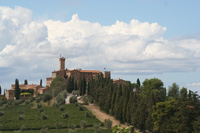 |
||||
The abbey of Sant'Antimo |
Cipress trees betweeno Pienza and San Quirico d’Orcia. |
Castello Banfi |
||
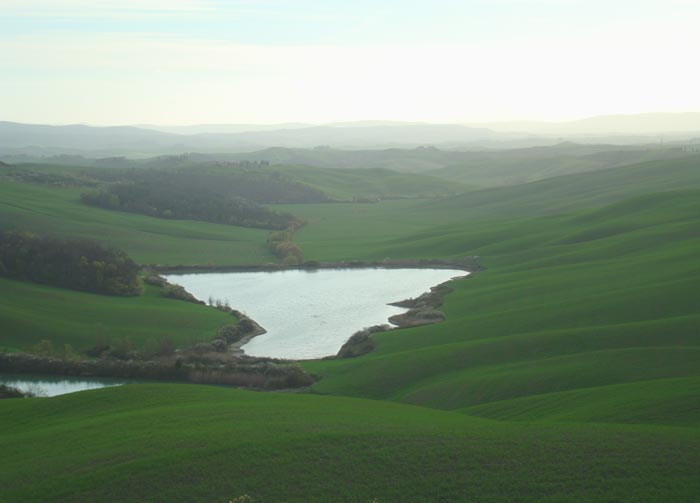 |
||||
Crete Senesi, surroundings of Podere Santa Pia |
||||
Podere Santa Pia is located in south of the ‘Crete Senesi’, a beautiful clay hills landscape which is an ideal starting point to discover Tuscany. The guesthouse is located in Castiglioncello Bandini, a charming medieval village situated on a hill, which offers a spectacular view on the Alta Valle dell’Ombrone and the Maremma. Montalcino, the abbey of Sant'Antimo, Pienza and are within easy reach.
|
||||
| This article incorporates material from the Wikipedia article Master of the Osservanza Triptych published under the GNU Free Documentation License. Wikimedia Commons has media related to Master of the Osservanza Triptych. |
||||



